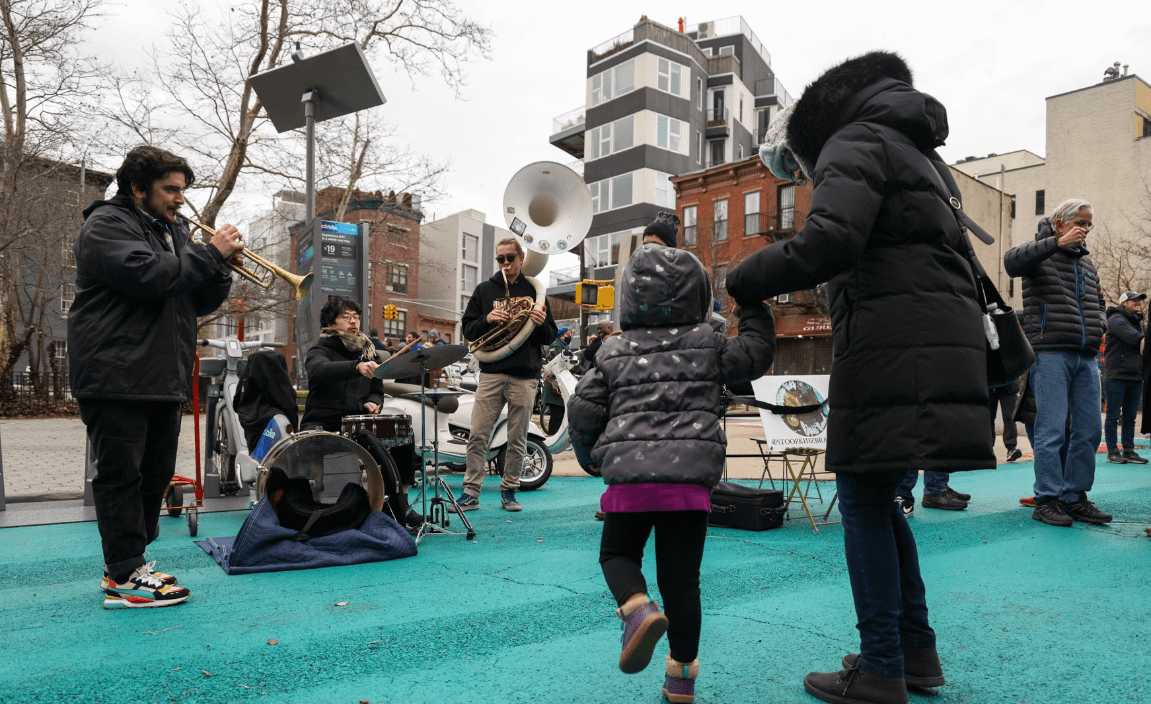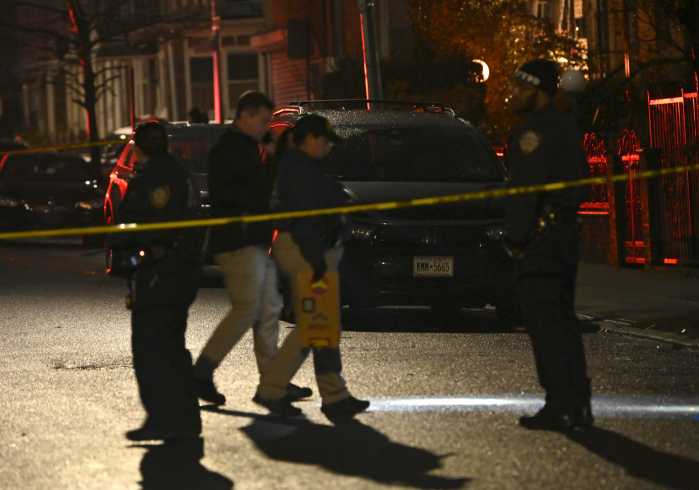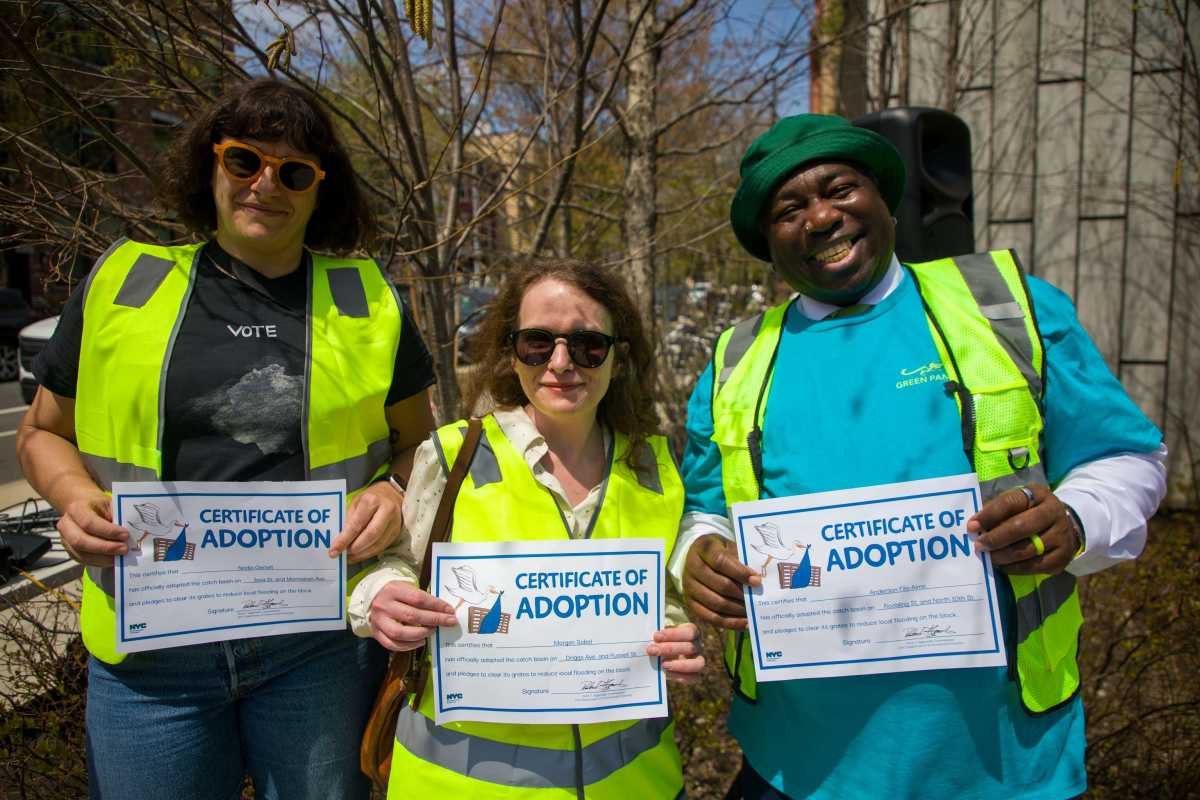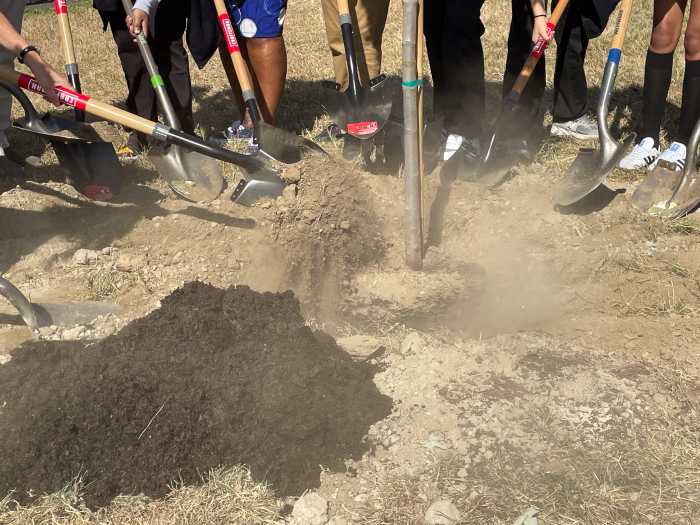Officials cut the ribbon Saturday on a new, permanent pedestrian plaza on the Underhill Avenue Open Street in Brooklyn, in what the city is calling the “first step in the evolution of Prospect Heights’ Open Streets to permanent public spaces.”
The one-block stretch of Underhill Avenue between Atlantic Avenue and Pacific Street, adjacent to the Lowry Triangle Park in Prospect Heights, has been painted a brilliant turquoise, outfitted with furniture, and furnished with planters and granite blocks at each end to halt automobile traffic and allow it to flourish as a gathering place.
Underhill, along with its neighbor Vanderbilt Avenue, was among the first of the city’s streets to be closed to traffic and opened to pedestrians at the height of the COVID-19 pandemic in 2020, and the two have since become some of the most popular in the program. The section of Underhill between Atlantic Avenue and St. John’s Place is restricted only to local access auto traffic, with through traffic banned, on weekdays from 8 a.m. to 4 p.m.
The new plaza is the first step in the Department of Transportation’s plan to transform the two-way avenue into a “bike boulevard,” which is expected sometime this year.
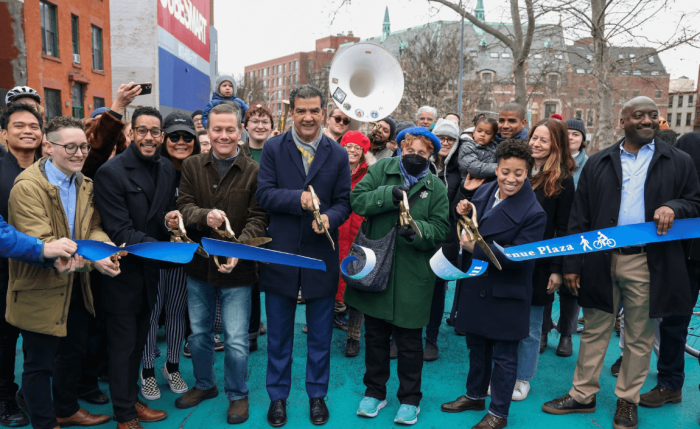
“I am proud to build on the success of our flourishing Open Streets program by cutting the ribbon on Underhill Plaza, a great example of how we’re developing our program locations with permanent designs that create safer, more vibrant community spaces,” said DOT Commissioner Ydanis Rodriguez in a statement. “This expansion of Lowry Triangle marks the first step in transforming Underhill Avenue into a Bike Boulevard that calms traffic by prioritizing cyclists and pedestrians — all without the need of moveable barriers.”
Under DOT’s plan, parts of the two-way Underhill Avenue will be converted to one-way car traffic with bike lanes in both directions, while other blocks will retain two-way vehicle traffic but will be outfitted with hefty center medians, intended to calm traffic.
The plan is part of a larger vision for Prospect Heights being championed by the Prospect Heights Neighborhood Development Council, which operates the Underhill and Vanderbilt Open Streets. On Vanderbilt, DOT has proposed upgrades to the existing bike lanes and the addition of new medians, pedestrian islands, bike corrals, and neighborhood loading zones.
The city is also considering its options for a major rehab of Grand Army Plaza, which could see the reunification of the Soldiers and Sailors Arch with Prospect Park to replace one of Brooklyn’s most chaotic intersections.
“The initial Open Streets program on Underhill Avenue has been very effective in keeping residents from getting hurt,” said Gib Veconi, Chair of PHNDC. “Both Underhill Plaza and the additional street improvements to come are permanent safety features that will protect pedestrians, cyclists, and children at our local public school and playground.”
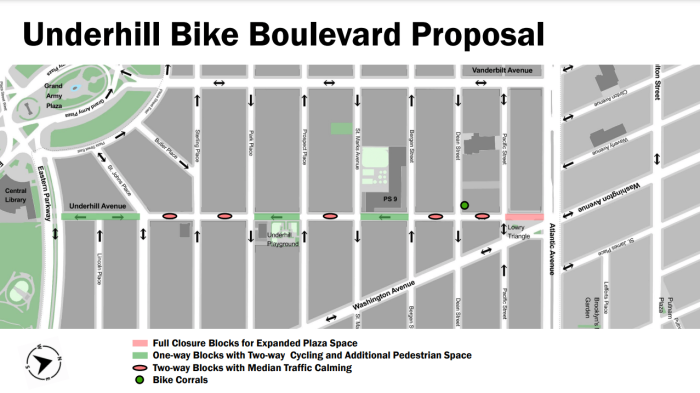
Both Underhill and Vanderbilt avenues have seen reductions in traffic crashes and injuries in the years since becoming Open Streets. Between 2019 and 2022, Underhill Avenue saw 39.2% fewer crashes and 28.7% fewer injuries than were seen from 2016 to 2019, according to NYC Crash Mapper. On Vanderbilt, there was a 42.5% drop in crashes and a 41.5% reduction in injuries in the same time period.
Brooklyn Borough President Antonio Reynoso — who has previously called for making Vanderbilt Avenue a permanent pedestrian plaza — took pleasure in the new plaza on Underhill.
“The transformation of Underhill Plaza into a permanent public space is a reminder that this city belongs to the people who call it home,” said Reynoso. “[T]he kids who play on the sidewalk, the families who walk our streets, and the communities that have opened up businesses, restaurants, and more.”
A study released by DOT and Bloomberg Philanthropies in October found businesses on Open Streets saw a significant boost in sales and commercial activity, especially compared to those on auto-centric roads. The program has nonetheless been controversial in some corners, with the occasional butting of heads between Open Street supporters and those concerned with the loss of parking spaces.
Underhill Plaza follows in the footsteps of several other Open Streets with blocks fully closed to cars. The first was on Dyckman Street in Inwood, where one block was transformed into pedestrianized Quisqueya Plaza in 2021. In Queens, the popular 34th Avenue Open Street has been rechristened as “Paseo Park” with various pedestrian improvements and cars banned or restricted on much of the stretch.



